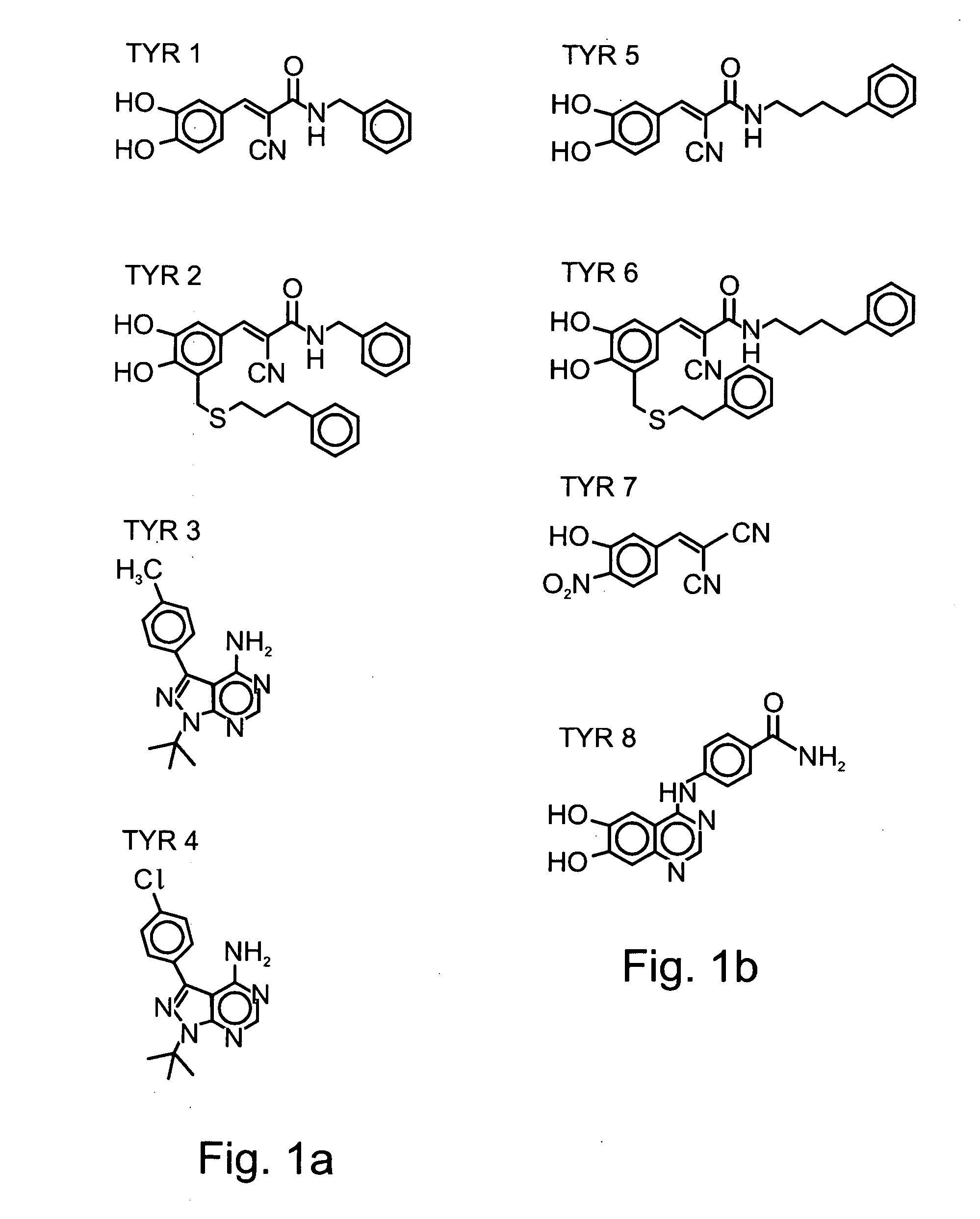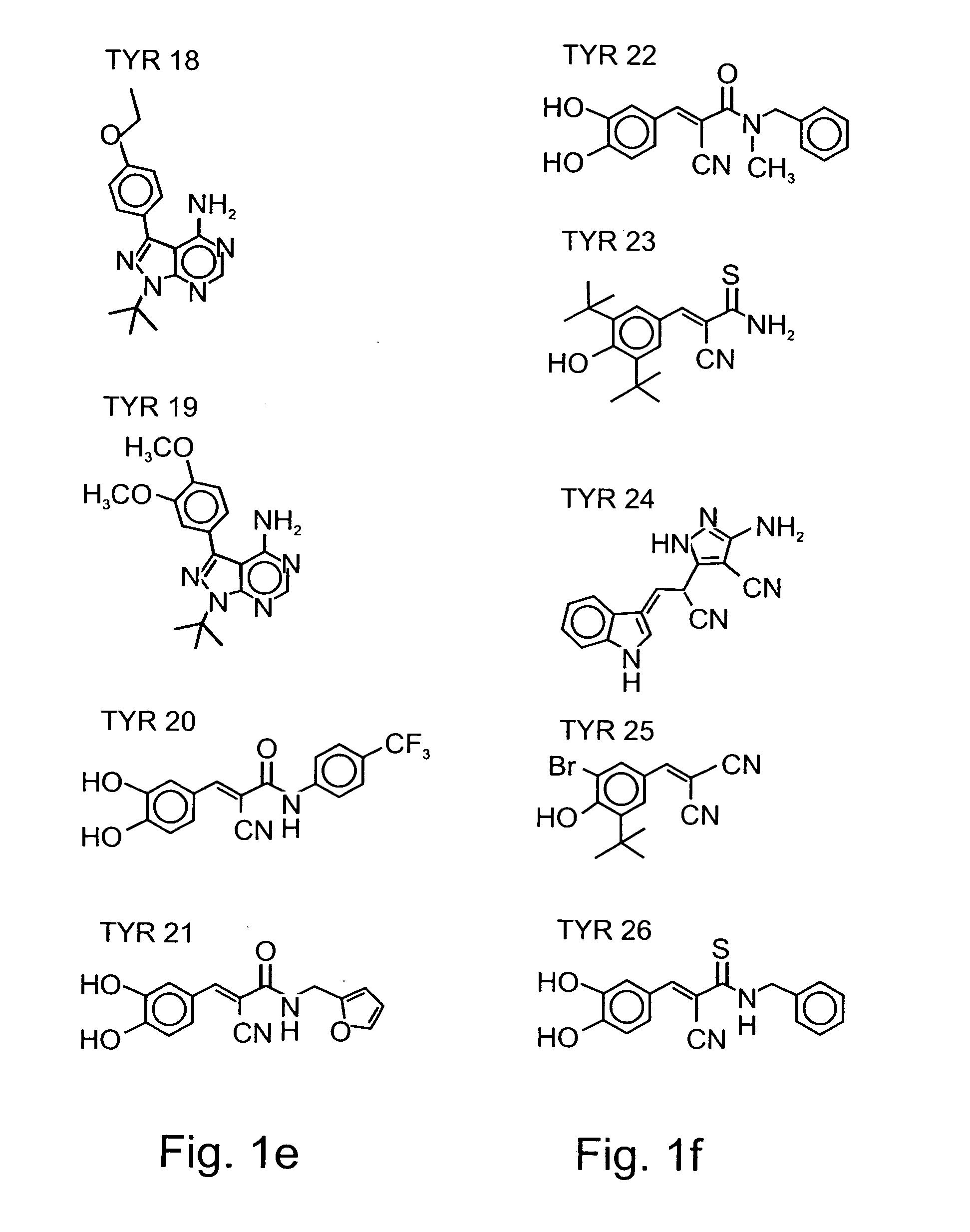Non-myeloablative tolerogenic treatment with tyrphostins
a tolerogenic treatment and non-myeloablative technology, applied in the field of nonmyeloablative tolerogenic treatment with tyrphostins, can solve the problems of gvhd, unable to tolerate the immune system, and unable to achieve transplantation success,
- Summary
- Abstract
- Description
- Claims
- Application Information
AI Technical Summary
Problems solved by technology
Method used
Image
Examples
Embodiment Construction
[0154] Reference is now made to the following examples, which together with the above descriptions, illustrate the invention in a non limiting fashion.
Materials and Experimental Methods
[0155] Cell sources: Human peripheral blood mononuclear cells (PBMC) were obtained from healthy human donors after separation on Ficoll-Paque density gradient essentially as described in Boyum, A. Scand. J Lab. Invest. 21 (suppl. 97):77 1968. Reagents:
[0156] Tyrphostins: Various tyrphostin compounds were synthesized according to known procedures disclosed in U.S. Pat. Nos. 5,196,446, 5,217,999, 5,302,606, 5,656,655, 5,700,822, 5,700,823, 5,712,395, 5,763,441, 5,773,746, 5,789,427, 5,792,771, 5,849,742, 5,932,580, 5,981,569, 5,990,141, 6,126,917, 6,331555, 6,358,951, 6,258,954 and 5,661,147, and in WO 01 / 34607, WO 99 / 07701, WO 99 / 53924, WO 96 / 29331, WO 92 / 20642, WO 91 / 16892, WO 91 / 16305 and WO 91 / 16051, which are all incorporated by reference as if fully set forth herein. Table 1 below presents the che...
PUM
| Property | Measurement | Unit |
|---|---|---|
| volume | aaaaa | aaaaa |
| total volume | aaaaa | aaaaa |
| total volume | aaaaa | aaaaa |
Abstract
Description
Claims
Application Information
 Login to View More
Login to View More - R&D
- Intellectual Property
- Life Sciences
- Materials
- Tech Scout
- Unparalleled Data Quality
- Higher Quality Content
- 60% Fewer Hallucinations
Browse by: Latest US Patents, China's latest patents, Technical Efficacy Thesaurus, Application Domain, Technology Topic, Popular Technical Reports.
© 2025 PatSnap. All rights reserved.Legal|Privacy policy|Modern Slavery Act Transparency Statement|Sitemap|About US| Contact US: help@patsnap.com



